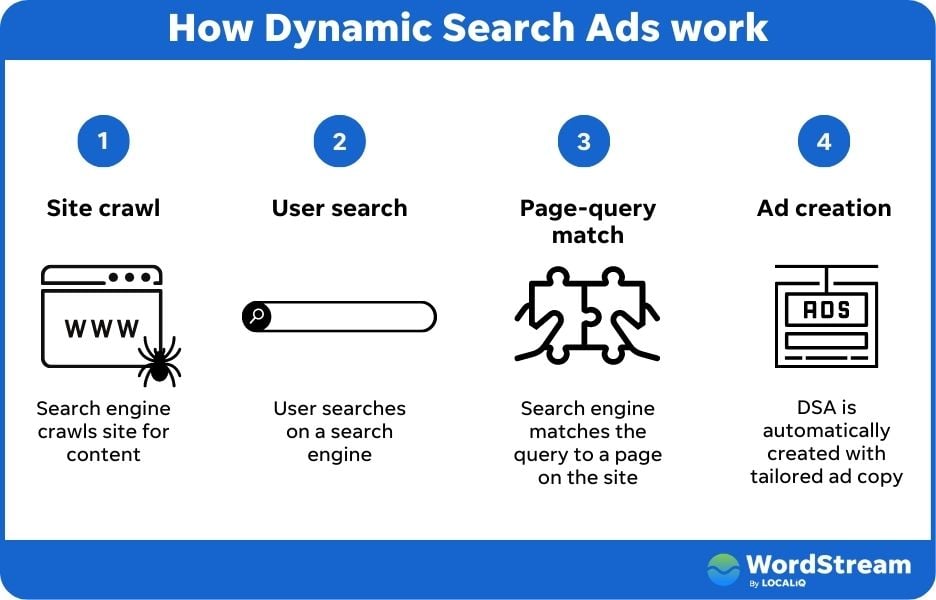Unlock the mystery of dynamic URLs with this informative blog post. Learn the ins and outs of this crucial web element.

Image courtesy of via DALL-E 3
Table of Contents
Introduction to Dynamic URLs
Welcome to the exciting world of dynamic URLs! Have you ever noticed how websites can change their content based on what you do? Well, dynamic URLs play a big part in making that happen. Let’s dive in and discover how dynamic URLs make websites more interactive and fun!
What is a Dynamic URL?
A dynamic URL is like a secret code that tells a website to show different things. It’s like changing the filter settings on your favorite online store to see only red shoes or updating the scores of your favorite game on a website. These URLs help websites to display specific information based on what you want to see.
Why are Dynamic URLs Important?
Dynamic URLs are super important because they make websites more personalized for you. Imagine visiting a website and seeing different content than your friend, even though you both went to the same page. That’s the magic of dynamic URLs at work, making your online experience unique and tailored just for you!
How Dynamic URLs Work
Dynamic URLs may seem like a complex concept, but they’re actually quite simple once you understand how they function behind the scenes. In this section, we’ll dive into the basics of dynamic URLs and how they work to bring personalized content to your favorite websites.
Parameters in a URL
When you see a dynamic URL with something like “?id=123” at the end, those are called parameters. These parameters tell the website’s server what specific content to show you. It’s like telling a magic genie exactly what you want, and they make sure you get it!
The Role of the Server
Think of the server as the gatekeeper of a website. When you type in a dynamic URL and hit enter, the server receives your request. It then looks at the parameters in the URL and sends back the right information, such as a personalized webpage or updated game scores.
Examples of Dynamic URLs
Dynamic URLs are like magic wands for websites, helping them show different content to different people. Let’s take a closer look at some examples of dynamic URLs in action on popular platforms.

Image courtesy of www.techwyse.com via Google Images
Online Stores
Imagine you’re searching for a cute pair of shoes online. When you type in your search keywords and hit enter, the website uses dynamic URLs to show you all the available options that match your search. Each time you refine your search by size, color, or brand, the URL changes to reveal only the shoes that meet your criteria. That’s the power of dynamic URLs in online shopping!
Video Platforms
Have you ever watched your favorite videos on a platform like YouTube or Netflix? Dynamic URLs play a vital role here too. When you click on a video link, the dynamic URL directs the platform to show you that specific video. Even when you pause, replay, or skip ahead, the URL keeps changing to match your viewing preferences.
Static vs Dynamic URLs
In the world of the internet, URLs play a crucial role in how we access websites and the content they offer. There are mainly two types of URLs: static URLs and dynamic URLs. Let’s explore the differences between these two types and how they impact your browsing experience.
Static URLs
A static URL is like a fixed address that always leads to the same place. It doesn’t change based on user input or interactions. Think of it as a favorite link to your favorite YouTube channel. No matter when you click on it, it always takes you to the same videos.
Dynamic URLs
On the other hand, dynamic URLs are more flexible and change based on certain parameters. For example, when you visit an online store and filter products by price or brand, the URL in your browser changes to reflect your choices. This is a dynamic URL in action, showing you personalized content based on your preferences.
Key Differences
The main difference between static and dynamic URLs lies in their behavior. Static URLs always lead to the same content, while dynamic URLs adapt to user input and show personalized results. Static URLs are like fixed signposts, while dynamic URLs are like interactive maps that guide you based on your needs.
Benefits of Dynamic URLs
Dynamic URLs bring many benefits to websites by allowing for personalization and flexibility in content delivery.

Image courtesy of www.wordstream.com via Google Images
Personalization
Dynamic URLs play a significant role in personalizing the website experience for users. By using dynamic parameters in the URL, websites can display content tailored to each visitor’s preferences. For example, when you visit an online store and filter products by price or brand, the URL changes to reflect your selection. This personalization makes the website feel more individual and relevant to your needs.
Flexibility
Another advantage of dynamic URLs is their flexibility in content display. Websites can easily adjust the information shown based on user interactions or external factors. For instance, on a video platform, dynamic URLs help users watch different videos by changing the video ID in the URL. This flexibility enables websites to adapt to changing requirements and deliver diverse content seamlessly.
Common Problems with Dynamic URLs
Dynamic URLs, while offering flexibility and personalization, can sometimes pose challenges for websites. Let’s explore some common problems associated with dynamic URLs.
SEO Challenges
Search engine optimization, or SEO, is a crucial aspect of ensuring that websites rank well in search results. Dynamic URLs can sometimes present challenges for search engines in properly indexing and ranking content. This is because dynamic URLs often include parameters that change the content displayed on the webpage. Search engines can struggle to understand and interpret these dynamic parameters, leading to potential issues with visibility in search results.
Link Sharability
Another common problem with dynamic URLs is link sharability. When users try to copy and share dynamic URLs, they may encounter difficulties. Dynamic URLs that contain specific parameters to display personalized content may not work correctly when shared with others. This can result in broken links or pages displaying incorrect information for recipients. As a result, sharing dynamic URLs across different platforms or with other users may not always yield the intended results.
How to Identify a Dynamic URL
When browsing the web, you might come across different types of URLs. Some of these are dynamic URLs, which contain special parameters that help websites show personalized content. But how can you identify if a URL is dynamic or not? Let’s find out!

Image courtesy of docs.paloaltonetworks.com via Google Images
Recognizing URL Parameters
One way to spot a dynamic URL is by looking for special symbols within the web address. Dynamic URLs often contain symbols like the question mark (?) and ampersand (&). These symbols indicate that the URL includes parameters that tell the website what information to display. For example, a dynamic URL for a shopping website might include parameters like ?category=clothing or &color=blue, which specify the type and color of items you want to see.
Creating Dynamic URLs
When you visit a website, the address you see at the top of your browser is called a URL, which stands for Uniform Resource Locator. A dynamic URL is like a regular URL but with special parts that change the content you see on the webpage.
Adding Parameters
Think of a URL as a set of instructions that tell the website’s server what information to show you. Parameters are like extra details added to the URL, such as ?category=toys or &sort=price. These parameters help the website understand what you’re looking for and show you the right content.
Summary
In this blog post, we delved into the world of dynamic URLs and how they play a crucial role in shaping the content we see on websites. Dynamic URLs are like magic keys that unlock different doors on a website, allowing us to view personalized and interactive content.

Image courtesy of www.pinterest.com via Google Images
What is a Dynamic URL?
We learned that dynamic URLs are like customizable filters that change the content on a website based on specific parameters. Just like adjusting filter settings on an online store or seeing updated game scores on a website, dynamic URLs make the web experience more dynamic and tailored to our preferences.
Why are Dynamic URLs Important?
Dynamic URLs are essential because they make websites interactive and personalized. They ensure that each user sees content that is relevant to them, creating a more engaging online experience. That’s why you might notice different things on a webpage compared to your friends!
Parameters in a URL
The different parts of a URL, like ?id=123, act as instructions for the website, telling it what content to display. Parameters are like secret codes that help the server understand what we want to see, making the content dynamic and ever-changing.
The Role of the Server
When we enter a dynamic URL, the server receives our request and responds by serving up the right information based on the parameters we’ve provided. It’s like a helpful guide who knows exactly where to take us based on our unique URL directions.
Examples of Dynamic URLs
We explored relatable examples of dynamic URLs in action, such as online stores and video platforms. Dynamic URLs help online stores show specific items based on our search or filter criteria, and they allow us to watch different videos on platforms like YouTube based on the URLs we click.
Static vs Dynamic URLs
Static URLs are like fixed addresses that always lead to the same content, while dynamic URLs are like versatile keys that open different doors to customized content. Understanding the differences between static and dynamic URLs helps us navigate the web with ease.
Benefits of Dynamic URLs
The benefits of dynamic URLs include personalization and flexibility. They make websites feel more tailored to our interests and allow for a variety of content display options, enriching our online experience.
Common Problems with Dynamic URLs
However, dynamic URLs can sometimes pose challenges like SEO issues and link sharability problems. Search engines may struggle with dynamic URLs, and sharing them can sometimes lead to unexpected complications.
How to Identify a Dynamic URL
To identify a dynamic URL, we can look for specific clues like URL parameters that include symbols like ? and &. Recognizing these indicators helps us understand when a URL is dynamic and how it influences the content we see.
Creating Dynamic URLs
We also briefly touched on how dynamic URLs are created, starting with the basics of URL structure and adding parameters to customize the content. For those interested in web development, creating dynamic URLs is an exciting skill to explore.
Dynamic URLs hold the key to a more personalized and interactive online experience, shaping the way we interact with websites and tailor content to our preferences. By understanding how dynamic URLs work, we can navigate the web with ease and unlock a world of customized content at our fingertips.
Want to turn these SEO insights into real results? Seorocket is an all-in-one AI SEO solution that uses the power of AI to analyze your competition and craft high-ranking content.
Seorocket offers a suite of powerful tools, including a Keyword Researcher to find the most profitable keywords, an AI Writer to generate unique and Google-friendly content, and an Automatic Publisher to schedule and publish your content directly to your website. Plus, you’ll get real-time performance tracking so you can see exactly what’s working and make adjustments as needed.
Stop just reading about SEO – take action with Seorocket and skyrocket your search rankings today. Sign up for a free trial and see the difference Seorocket can make for your website!
Frequently Asked Questions (FAQs)
Are Dynamic URLs Safe?
Yes, dynamic URLs are safe to use. They are commonly used on many websites to personalize your browsing experience. Dynamic URLs simply help websites display different content based on specific parameters, making your visit more tailored to your interests. So, there’s no need to worry about safety when encountering dynamic URLs!
Can Dynamic URLs Be Shared?
Dynamic URLs can be shared, but there might be a few things to consider. Since dynamic URLs often contain specific parameters that tell a website what content to show, sharing them might lead to unexpected results for the recipient. For example, if you share a dynamic URL that shows a personalized page based on your preferences, the person you share it with may see content meant just for you. So, while dynamic URLs are shareable, it’s important to keep in mind that the content displayed could be different for others.
Do Dynamic URLs Affect Website Speed?
Dynamic URLs themselves don’t directly affect website speed. However, the complexity of the content being generated by dynamic URLs can sometimes require more processing power from the server, which may result in a slightly longer loading time for the webpage. This means that websites with many dynamic elements might take a bit longer to load than simpler static websites. But don’t worry too much about it! With advancements in technology, websites are constantly improving their speed and performance to minimize any delays caused by dynamic URLs.







